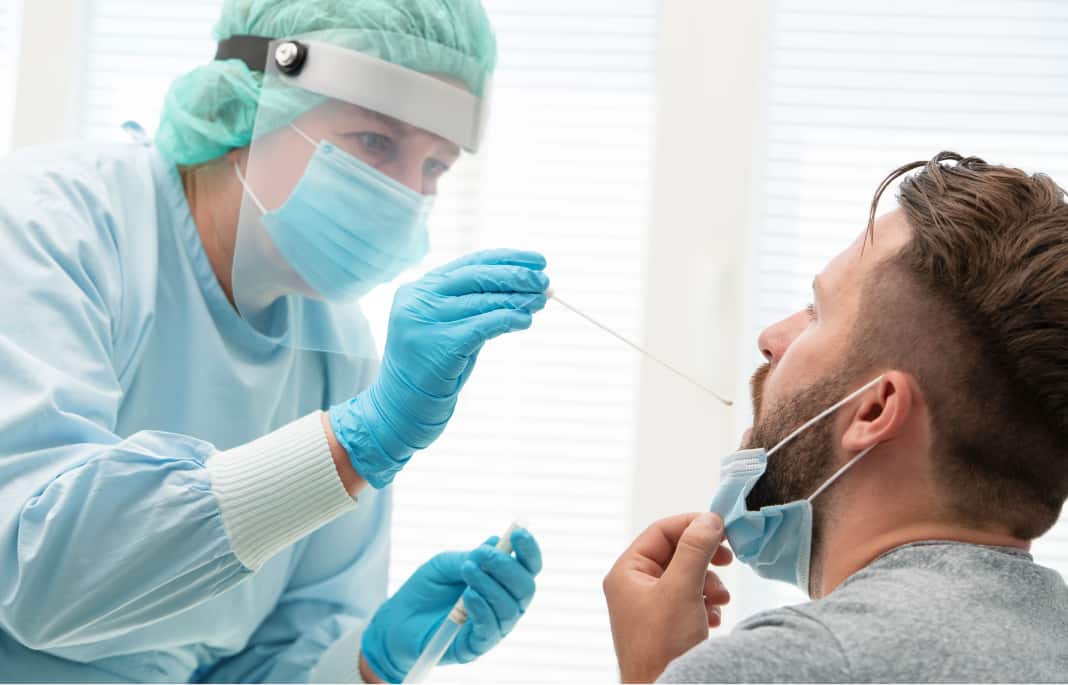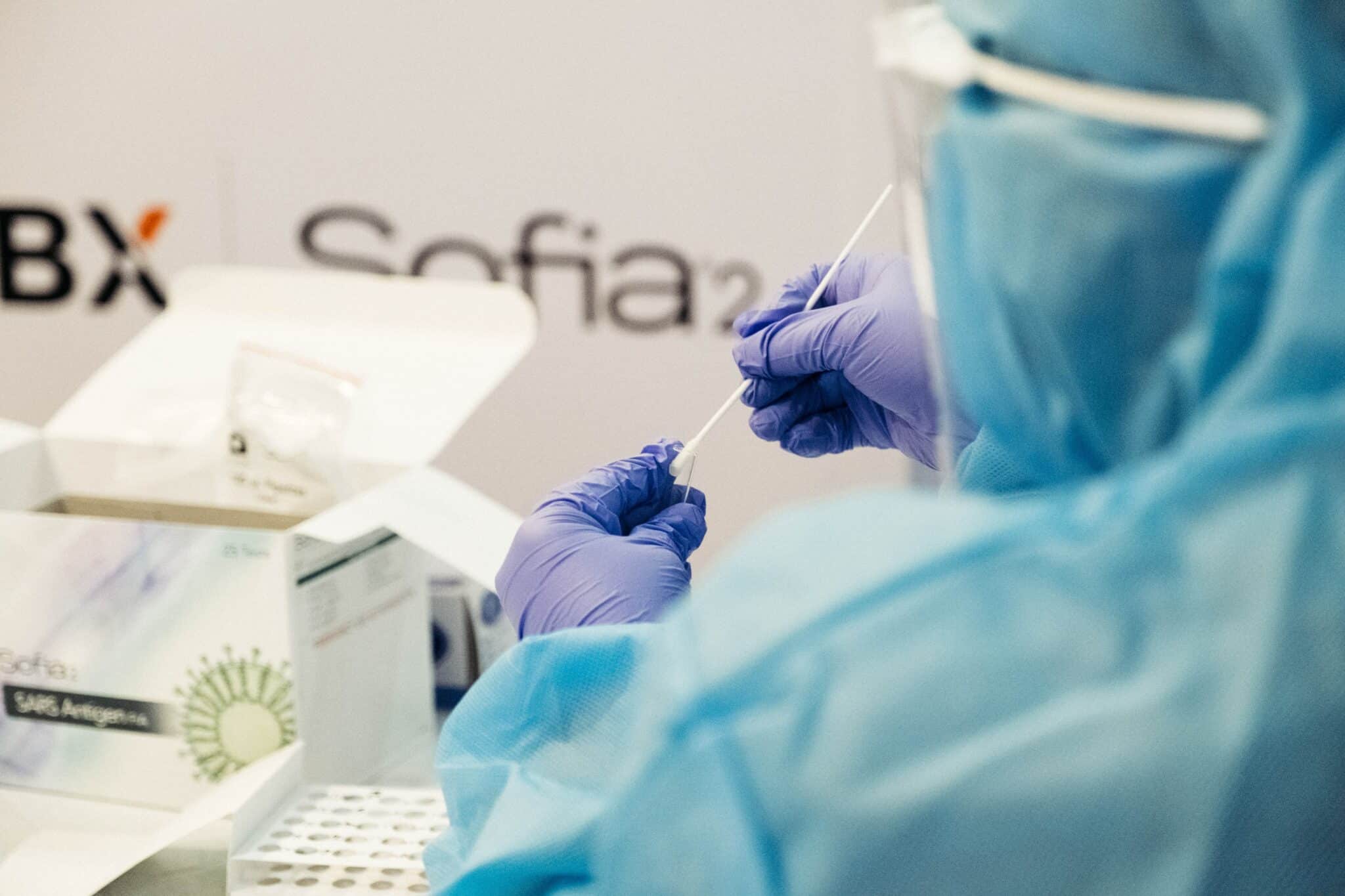Getting Ready to Get Tested: Antigen & PCR Testing Instructions

Over the past few months, borders all around the globe have been reopening for international travelers. And there’s one thing we can all agree on: We’ve all been waiting for this moment. A lot has happened since 2020 and the first Covid-19 outbreak, so who hasn’t been longing for some well-deserved time off? It’s time to get the bags and passport ready.
However, as you might already know, there are some things you will need to do before your flight, to have a safe trip. And one of them is getting tested.
In this article, we’ll dive into everything you need to bear in mind before attending your testing appointment. We’ll take a look at:
- General test availability
- What is a PCR test and what it usually entails
- PCR testing instructions, depending on the type of PCR you’re going to take
- How to prepare for an antigen test
Let’s go.
What Tests Are Available?
Let’s start with the basics: Regulations differ from one nation to another. That is why you will notice that depending on your destination country, you have the option to get different types of tests to detect whether you are currently infected with the virus that causes Covid-19. Anyhow, all in all, the most popular ones are PCR and antigen tests.
PCR Testing Instructions: How to Get Prepared
PCR tests are the most accurate Covid-19 tests in the market, which is why they are the most frequently requested for inbound travel, around the world. Generally, you are supposed to get a PCR up to 3 days before your flight. However, some countries, like the USA, request that non-vaccinated residents get the test 24 hours before arrival. Therefore, we suggest you plan ahead and check the travel requirements of your destination country before your trip.
PCR tests can be performed either in a laboratory or at a testing center, and the procedure is quite simple. The nurse should take a sample from your nose and/or mouth. There are two ways that they can collect this sample from you: With a swab or through your saliva. Let’s take a closer look.
How to Prepare for a PCR Test with a Nasal and Oral Swab
This is the best-known method to collect a usable sample. The swab (which looks a lot like a long Q-tip) is first inserted into your throat and then into your nostrils. Once that is done, it is removed, packed, and sent out to a lab for testing.
It’s fair to mention that when taking the sample from your nose, the swab will be inserted about 2 inches into your nostril (until you feel resistance), and then swirled around for a few seconds. Hence, it’s likely that you experience a tickling sensation during this procedure. Afterward, you might feel like sneezing or have runny eyes for a brief moment.
With this method, there are no pre-testing requirements. You can simply show up at your testing location of choice. However, you might want to bring some tissues.
How to Prepare for a Saliva Test
Unlike the swab test, the saliva test can be self-administered, which means that you can do it by yourself at any lab or testing center. There are also testing kits that allow you to perform the saliva test at home, but not all travel destinations accept them.
For at least 15 minutes before your appointment, you must not:
- Drink
- Eat
- Smoke
- Brush your teeth
- Use nasal sprays
During your appointment, you will be asked to take in a liquid (which you don’t have to swallow), gargle, and spit multiple times into a funnel attached to a tube. You will have to do this until you fill it up. Finally, you will have to close the funnel. Normally, it takes around 10-12 minutes to produce enough saliva.
The saliva test is a relatively new method, and the World Health Organization (WHO) has equated its accuracy with the swab test. The best advantage here is that it’s not only simple but also more pleasant for people to perform.
Nevertheless, this type of test might not be the best way to go for those with low saliva production, such as really young children, or people who have suffered a stroke.
How to Prepare for an Antigen Test
Antigen tests are also known as rapid tests. This procedure is just like the PCR swab test. However, the results are not as accurate. The good thing is that you can get your results in about 30 minutes, which makes antigen tests ideal in emergency cases. They also happen to be a bit cheaper than PCRs.
No preparation is required for antigen tests, you can simply show up to a testing facility and get tested, at any time.
Key Takeaways
In this post, we took a look at general antigen & PCR testing instructions.
All in all, even though restrictions have varied since the beginning of the pandemic, there is one thing that remained the same: getting tested is the best way to keep you and those around you safe. Discover reliable Covid-19 testing centers close to you, with our global directory.



